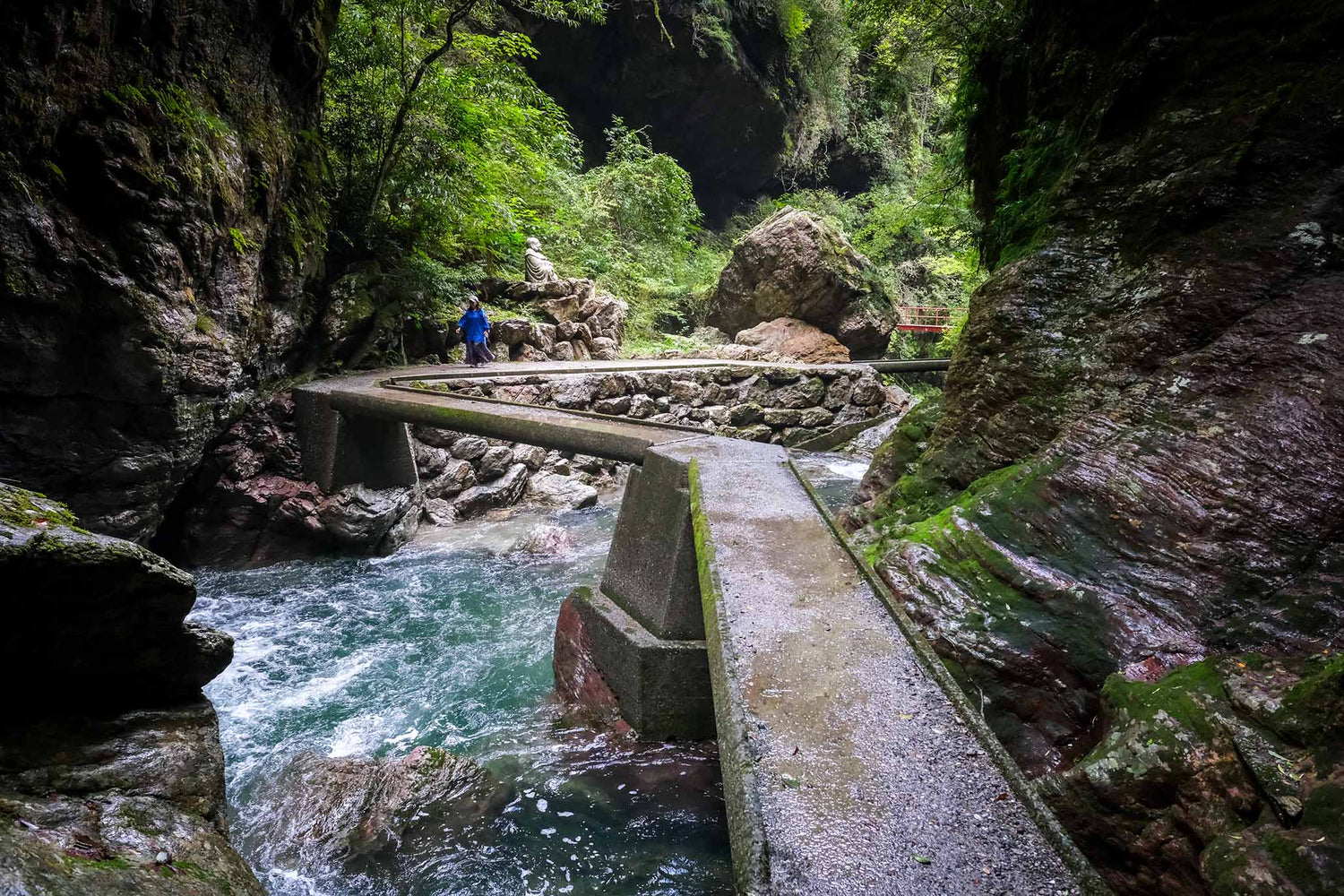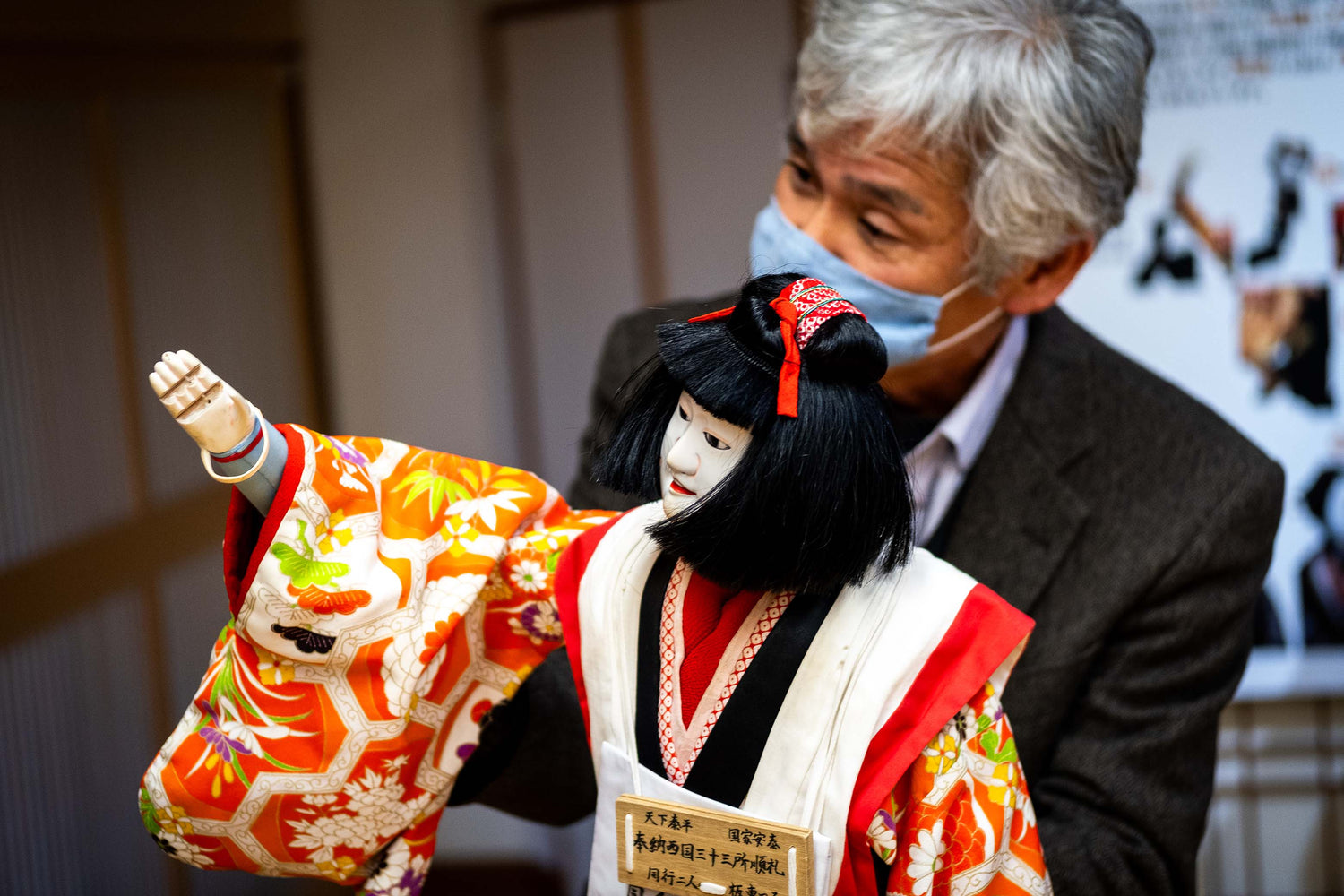Amid one of the many quiet suburbs surrounding Tokushima City proper and nearby the deep green waters of the Miyajimaekogawa River, is the Awa Jurobe Manor; a renovated traditional style mansion complete with picturesque courtyard garden, quaint tea house, and towering pines. Of course, it serves as a nice example of traditional Japanese architecture but such structures are common in Japan which begs the question, “what makes this manor any different?”
The answer to this may at first seem underwhelming, but this is home to a theater and museum dedicated to “ningyō-jōruri,” or Japanese puppet theater. And while puppets may not often hang heavily on the minds of many, these puppets are quite distinct from the sometimes-unsettling wooden mannequins dangling from strings that we may be more familiar with and moreover these puppets have a surprising story to tell that connects with the culture of Tokushima.
Largely speaking, puppetry gained popularity in Japan in the late 17th century in a form known as “Ōsaka bunraku,” which typically used smaller-size puppets to retell stories from the day-to-day experiences of Medieval Japan. For whatever reason, many of the performers came from the small, largely agricultural island of Awajishima separating Ōsaka and Tokushima while the puppets themselves were largely crafted by artisans from Tokushima. In fact, even today artisans in Tokushima continue to make puppets the traditional way in addition to repairing and restoring puppets used in modern performances.
These puppet shows spread through the valleys and hills of Tokushima becoming popular with all walks of life. In particular, the widespread popularity of the puppets can be attributed to Tokushima’s lucrative indigo-dye trade and with kimono pockets full of cash, merchants were able to patronize and bankroll any number of projects including geisha, local festivals, and of course the popular puppet theater.
To account for the crowds and the often-rustic setting of medieval Tokushima these puppets were larger, requiring as many as three puppeteers to properly control. These puppets were also covered with lacquer, giving them a glossy sheen, which could be more easily seen during the largely outdoor performances held at dedicated countryside stages, temporary makeshift platforms, or even on the grounds of temples and shrines.
The largest number of these countryside stages in all of Japan can be found in Tokushima revealing that this really was something people across all social strata enjoyed and hints at their importance to any number of local communities spread across the prefecture. In addition to normal showings, on special holidays puppets depicting a Shintō priest or Ebisu, one of the 7 Lucky Gods, would go door to door blessing households and making people smile.
And when stepping into the theater one is able to feel some sense of the past wealth and popularity these performances enjoyed.
Tales of Stolen Swords and Wandering Pilgrims
The manor’s garden is perfectly “Japanese,” and the buildings are well maintained in traditional style and entering the front gate of the manor is almost like stepping back to a time of lords, ladies, wandering monks, and samurai which for better or worse now exists only in memory and imagination.
In the cavernous hall, the performance begins with the eerily lovely melody of the narrator’s sing-song voice which ripples along the spine evoking some kind of emotion and proving that music truly is a universal language. As the hauntingly bitter-sweet tone of the story floats through the dimly lit hall in cadence with the sounds of the shamisen player, the words of the performance aren’t always fully understood (even by the Japanese) but are distinctly felt as the tale unfolds.
The puppets and their masters make their performance in time with the emotional beats of the beautifully melancholy sounds hanging thick in the air like incense at a temple. The puppeteers remain draped in large black robes which obscure their forms and the skill exhibited when controlling the puppets so unobtrusively informs the audience of who the true stars of the performance are.
Every movement, turn of the head, or change in posture is flawless in execution as the three masters seamlessly move the puppets in a symphony of grace and skill. There is no sudden jerking or shaking, and the elegant motions of wooden limbs, blinking of painted eyes, and the turning of gleaming porcelain faces contain a human finesse lurking behind the smoothness of the gestures. And as the performance comes to a close, the pitch of the narration and strumming of the shamisen washes over the audience informing both Japanese and English speakers alike that the story is soon to reach its oddly morose conclusion at which Japanese theater seem to excel.
Without revealing too much, the most famous story performed revolves around the struggles of a samurai who along with his wife are tasked to hunt down a sword stolen from their local lord. A highly dramatic part of this tale involves their daughter coming to look for her missing parents while posing as a pilgrim and the ultimate misfortune which befalls the search.
In a way, the story is as strange as it is sad and can subvert western expectation about how a story should end albeit in in an interesting, emotional, and engaging manner. However, the tale does reveals two important concepts about traditional Japanese theater and culture, “giri” and “ninjyō.”
Obligations, Desires, and Unexpected Appreciation
Simply put, giri refers to a sense of obligation and duty while ninjyō refers to our own desires. The constant tension between what we really want to do and the social chains of obligation and duty remains a very real part of Japanese life to this day and is something we can all relate to from time to time.
Likewise, this conflict is seen in the pain of leaving behind a loved one in order to obey one’s lord as well as in the dangerous journey of a daughter searching for her parents. The tug-of-war between the two forces is not only clearly visible but also felt as movement conforms to the sorrowful narration and accompaniment making the struggle between duty and desire visceral as the performance inevitably approaches its climax.
And to see such a performance relatively unaware of just what exactly Japanese puppet theater really is proves to be a strangely humbling as well as enlightening kind of experience as the performance comes to its close.
And this only goes on to prove that when the pre-existing thoughts and notions that sometimes arise are absolutely shattered a reverence and joy can arise in its place at the realization of a growing appreciation for something newly discovered. It is a sensation that remains interesting, surprising, and ultimately enjoyable and is just one of many pleasantly unexpected experiences that can demonstrate the beauty, power, and depth found deep within the traditions of this place we call Shikoku.
Written by H.Sapochak
Photos by Pierre Verney

Nakatsu Gorge: The Water in the Mountains
Ringed by the calm waters of the Seto Inland Sea to the north and swept by the vast expanses of the Pacific Ocean to the south, Shikoku is truly a study in contrasts and if any one of the four prefectures of the island exhibit the full extent of this it is surely Kōchi, the sprawling southern prefecture of Shikoku.
In partnership with Discover Shikoku!
-
 Disover Shikoku
Disover ShikokuWelcome to Japan's most creative and bespoke travel experience, Discover Shikoku! We are a regional destination management company covering the mystical island of Shikoku, the Seto Inland Sea, and the coastal regions which surround it. If you're in search of a one-of-a-kind handcrafted travel experience fully tailored to your expectations then welcome home... We've got just what you're looking for.














